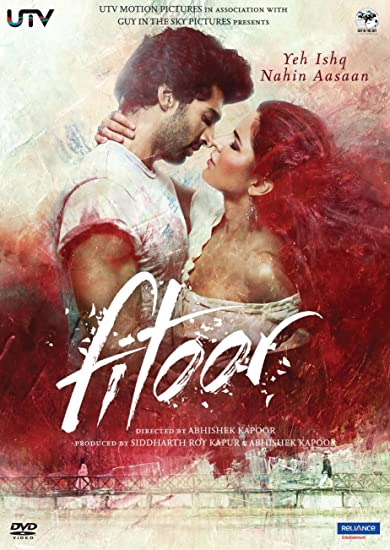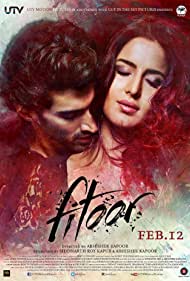The selection and use of European locations in Indian cinema involves a range of negotiations. Since the 1990s, the presence of international space increased exponentially in Indian cinema following the tremendous success of Yash Chopra’s Dilwale Dulhaniya Le Jayenge (DDLJ, 1995). The use of Switzerland’s picturesque locations played a major role in attracting Indian tourists to the country. This relationship between cinema and tourism has only expanded since the 1990s. Apart from Switzerland, the U.K, Germany, Italy, France, Spain etc. have also been popular sites in Indian cinema.
Simultaneously, Eastern Europe emerged on the horizon as a major location for shooting. Poland, The Czech Republic, Romania, Hungary, Georgia, Bulgaria, and Croatia have all entered the landscape of big-budget spectaculars. Budapest was the location for Sanjay Leela Bhansali’s Hum Dil De Chuke Sanam (1999), but it was presented as an unnamed Italian city! Kunal Kohli’s Fanaa (2006) required Kashmir as a location, which they could not get for security reasons. Poland thus became the site for a simulated Kashmir.
Until 1989, Eastern Europe followed a system where film production and film education were administered and financially managed by the state, and for this, an elaborate distribution and exhibition network was established. Film Institutes were set up in several countries to aid in the development of a film culture in support of the socialist cause. These schools have produced several internationally renowned directors, cinematographers, and other talented technicians. State support was also extended through the creation of highly equipped studios for production and post-production work. The fall of the Communist regimes in 1989 led to the entry of private capital and the withdrawal of state support from many areas of production. As a result, the infrastructure of film production experienced a crisis. The trading of locations for shooting was initiated by many EU governments to help deal with the economic crisis faced by local film production outfits. India joined the fray to access locations in Eastern Europe as well as other untapped West European locations for their productions.
The inclusion of several new European destinations in popular narratives has resulted in a substantial expansion of the global networks that drive the production of Indian cinema. There are organizations now dedicated to handling the movement of finance, personnel, labour, and technology. This expansion, depending on the destination, relies on both corporate structures and informal associations. These processes have led to the formation of diplomatic and trading networks, with awards instituted for film personnel who have helped in the promotion of tourism.
Documentation of the financial, material, and creative elements of the production infrastructure involved primary research and for these more than 50 interviews were conducted in Mumbai, Chennai, Kolkata, Trivandrum, and Lisbon. Extracts of some of these interviews are available here. Interviews were conducted with several executive producers, directors, scriptwriters, associate producers, creative producers, production designers, sound recordists, line producers, location scouts, and travel coordinators. Interviews were also conducted with those who document “behind the scenes” on video. These interviews provide information on the specific mechanisms involved in the use of European locations.
The shooting in Europe has increased in the last three decades. European countries have started offering rebates and tax incentives, so that even a small filmmaker who feels they cannot shoot abroad is able to make certain calculations. Tax rebates can range from 10–35%. What a producer spends in a particular country—a certain amount of the actual expenditure—is returned to the producers. Various events are held in Europe and India to showcase the facilities available for shooting abroad. Rebates are offered because of tourism as well as employment for local people.
Saif Akhtar (a documentary filmmaker who makes behind-the-scenes videos) noted that the rebates offered by European countries can sometimes cover 40 or 45% of the budget, which would include hotels, airlines, crew, transport, etc. This allows the budget to be slashed. But in return for this kind of rebate, the host country also negotiates a promotional video showcasing their location. In the case of Ek Tha Tiger (2012), they chose Austria because the wolf sequence needed a snow-bound location and there was a well-known wolf trainer in Austria that offered a rebate. They also extracted a promotional video featuring the advantages of shooting in Austria.
Since 2007, Britain introduced a “Culture test” to ascertain how much rebate should be offered. If a filmmaker wants tax concessions in Britain while shooting a film there, they must clear a test of ‘Britishness’. This also requires that at least 25 percent of the film’s budget be spent in Britain. However, British co-productions with foreign film companies are exempt from this. The ‘Britishness’ test is based on a list of criteria that need to be adhered to. These include the use of British actors and crew for the shooting as well as the incorporation of English dialogue in the film. While Britain pays serous attention to this, other countries may ask for a minimum expenditure to make them eligible for tax benefits and rebates. A percentage of the expenses incurred in European locations is returned if a film production clears the “cultural test”. Example: If 3 out of the 4 characters are UK citizens and the story is about a citizen from the UK, points are granted. Similarly, if technicians and personnel are from the UK, the film could get some points. For a producer from the UK, for instance, the production can qualify as a UK film if at least 20 points are acquired in the Cultural test. The use of characters from the UK who speak (dialogues) for a certain length of the film can get the film points for the culture test.
The criteria for the selection of European locations can be divided into two broad categories: what one needs for a script and what is on offer in terms of rebates and subsidies. Then these two categories start to merge. If Poland and Serbia have better subsidies, then they can be used to stand in for London. A film like War (2019) is so big that it does not matter where it is shot; it can go anywhere in the world. For Fan (2016), London had to be a location because the story demanded that. Many scenes were shot in Dubrovnik, Croatia, to highlight an architectural texture that would be different from the London sequences. Dubrovnik, especially the Old Town, was thus written into the script for an outdoor action sequence. It was also cheaper to shoot the action sequences in Croatia because of the support extended by local authorities.
Location scouts, Line producers, and Executive producers are key figures in the execution of the entire process involved in the selection and management of locations. They negotiate diplomatic, financial, and trade arrangements to get the best possible incentives and support from the European side. The Line producer plays a crucial role in pushing for locations via images and catalogues, and they negotiate packages with the Executive producer. Film Bodies are very important since they help connect production houses to local handlers or line producers. Most countries also have an Indian who becomes a Line producer. The Executive producers and Line producers handle all the paperwork and bureaucratic procedures. For shooting abroad, either a new company is formed or a collaboration is initiated with a local Line producer, who sets up all these accounts, etc. A proper legal team is hired to draw up the contracts. All financial transactions are cashless, and every crew member has an independent contract. All monetary transactions are white, so there is an incredible amount of paperwork. In the initial stage, no money is exchanged, only the script. Line producers are selected based on recommendations, and then budgets are shared. Following this, locations are scouted with the line producers, and the contract is signed between the line producer in Europe and the Executive producer from India. Line producers represent the country and are the ones handling the film, dealing with local municipal concerns, and procuring visas for the actors and the crew.













